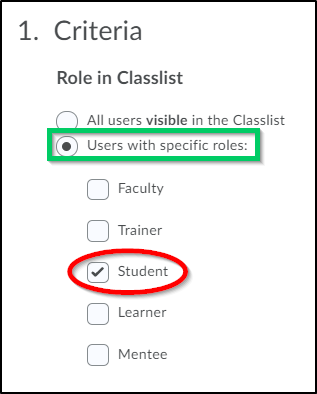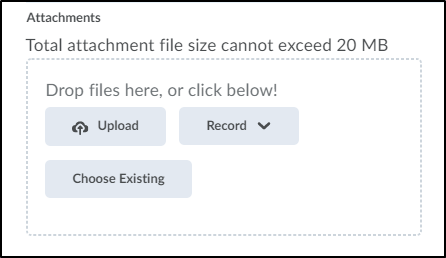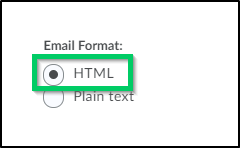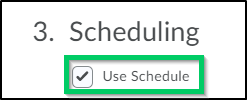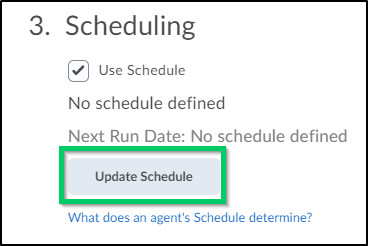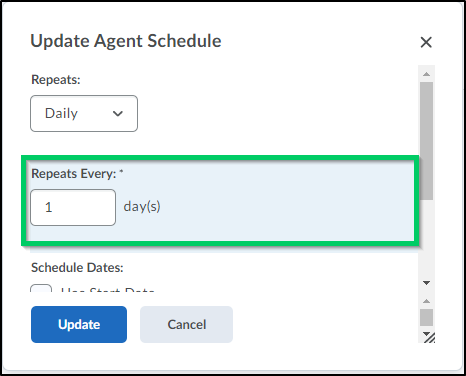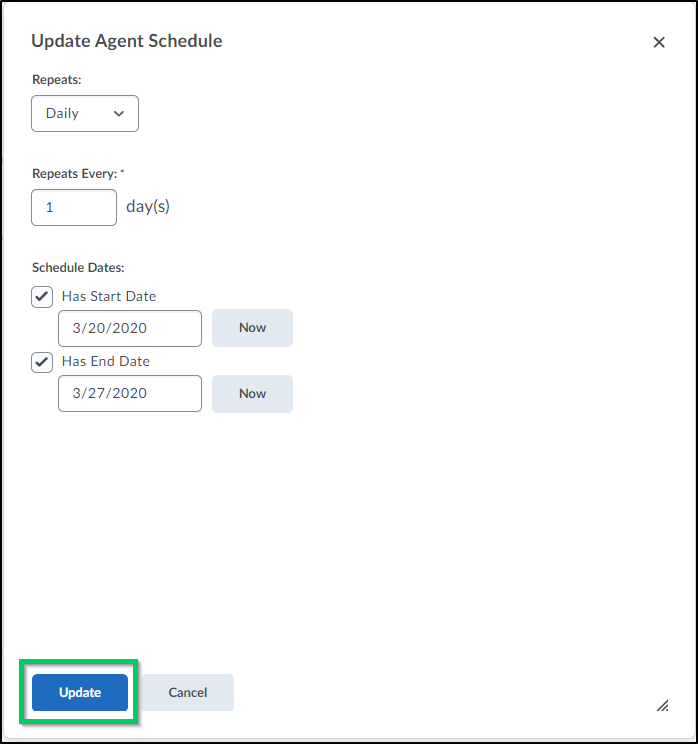Creating an Intelligent Agent for Missing Student Engagement
Goal
After reviewing this how-to you will have the knowledge needed to create an Intelligent Agent that will identify students who have not accessed a specific Brightspace course for a specified number of days. For information on how to navigate to Intelligent Agents within a Brightspace course, please review the Navigating to Intelligent Agents article.For a more in-depth explanation of the Agent list and its functionality, please review the Intelligent Agent List Overview article. For other guides on Intelligent Agents, see the Intelligent Agent topic page.
Navigation
- Navigate to Intelligent Agents within your course and select the "New" button.
- In the Agent Name field, create a name for the Intelligent Agent. **For this scenario, we are identifying students who have not accessed the course for 7 days or more.**

- In the Description field, enter a description that describes what the agent does upon a glance.

- In the Status field, select the "Agent is enabled" checkbox to enable the intelligent agent.
- Under the "Criteria" category and within the "Role in Classlist" subcategory, select the radio button that determines what role the intelligent agent should pertain to. This should typically be set to "All users visible in the Classlist". However if there are mentees or teaching assistants assigned to the course and who are visible in the classlist, select the "Users with specific roles" radio button to specify the roles that the agent should pertain to. In this scenario, the "student" role should be chosen.
- In the Course Activity subcategory, select the checkbox to "Take action when the following course activity criteria are satisfied:".
- Select the criteria needed for this agent.
- Under the Actions category and within the "Repetitions" subcategory, select the appropriate Action Repetition setting. **For this scenario, it is recommended that the "Take action every time the agent is evaluated and the agent's criteria are satisfied for a user" radio button is chosen.**
- In the "Send an Email" subcategory, select the checkbox to "Send an email when the criteria are satisfied". The "Name that the emails come from" and the Reply-To address for responses" should prefill with the name and email address set up previously in the Settings. To review how to set email preferences for Intelligent Agents within a course, review the Setting Email Preferences for Intelligent Agents within a Course article.
- In the "To" field of the email, enter your email address.
- Enter a subject for the email that will be sent to you when the agent's criteria is triggered. It is recommended that the subject clearly identify information about the content of the email without having to open the email. Replacement strings can be used to pull the student's name into the subject line. **Note: Failure to put the replacement string in exactly may result in the intelligent agent not functioning properly**. In the example below, the subject identifies the following information: Course Name, Student's First Name, Student's Last Name, and the Subject Matter. For more information on replacement strings, see the Using Replace Strings in the Email Notifications Used Within an Intelligent Agent article.

- The Message field can contain any type of information that the faculty may need to be reminded of.
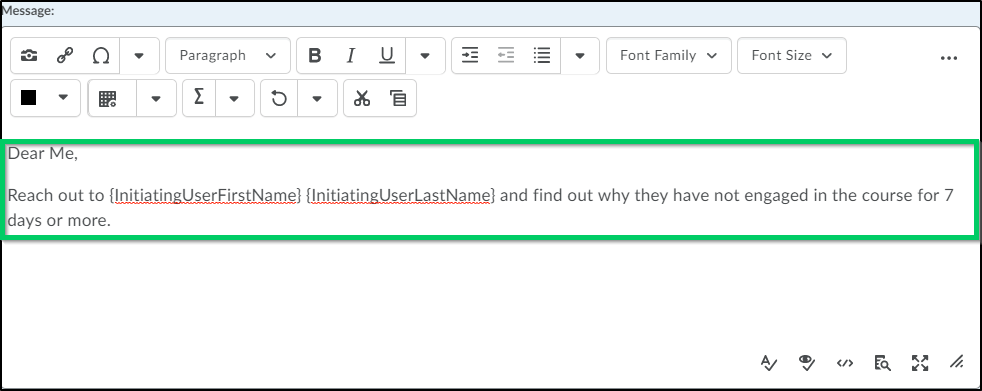
- In the Attachments subcategory, the faculty can upload any materials that they would like for the student to have, such as a copy of the new engagement policy.
- The Email format subcategory will default to "HTML". This setting can be left to the default.
- In the Scheduling category, choose the checkbox to "Use the Schedule". Not using the scheduling feature will result in the faculty having to run the agent manually each time.
- Choose the "Update Schedule" button to set up the frequency that the agent should run.
- The "Update Agent Schedule" box will allow faculty to choose how often the agent runs. In this instance, the faculty would want the agent to run daily.
- The "Repeats Every:*" box will allow faculty to set how often the agent repeats. For this agent, it would repeat every day.
- The Schedule Dates field will allow faculty to enter the start and end dates for the agent. For example, faculty may want to set the start and end date of the agent to match the start and end dates of the course.
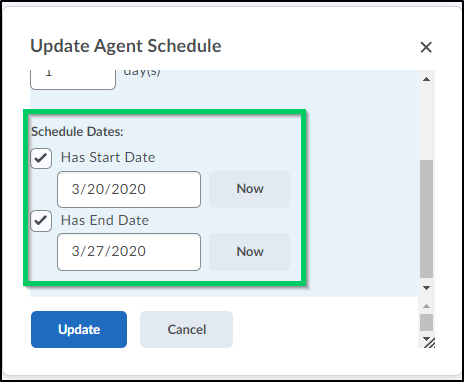
- Once the parameters are set, select the "Update" button.
- Select the "Save and Close" button to complete the setup.



